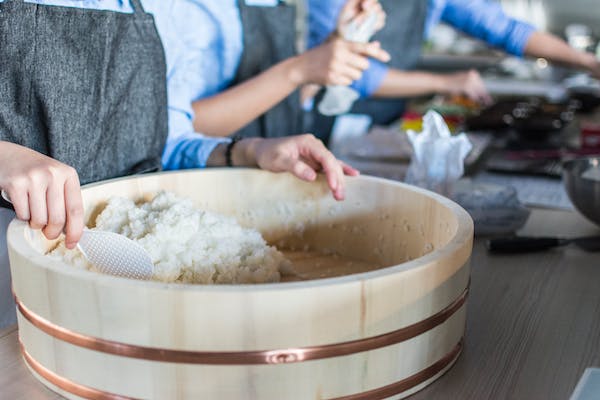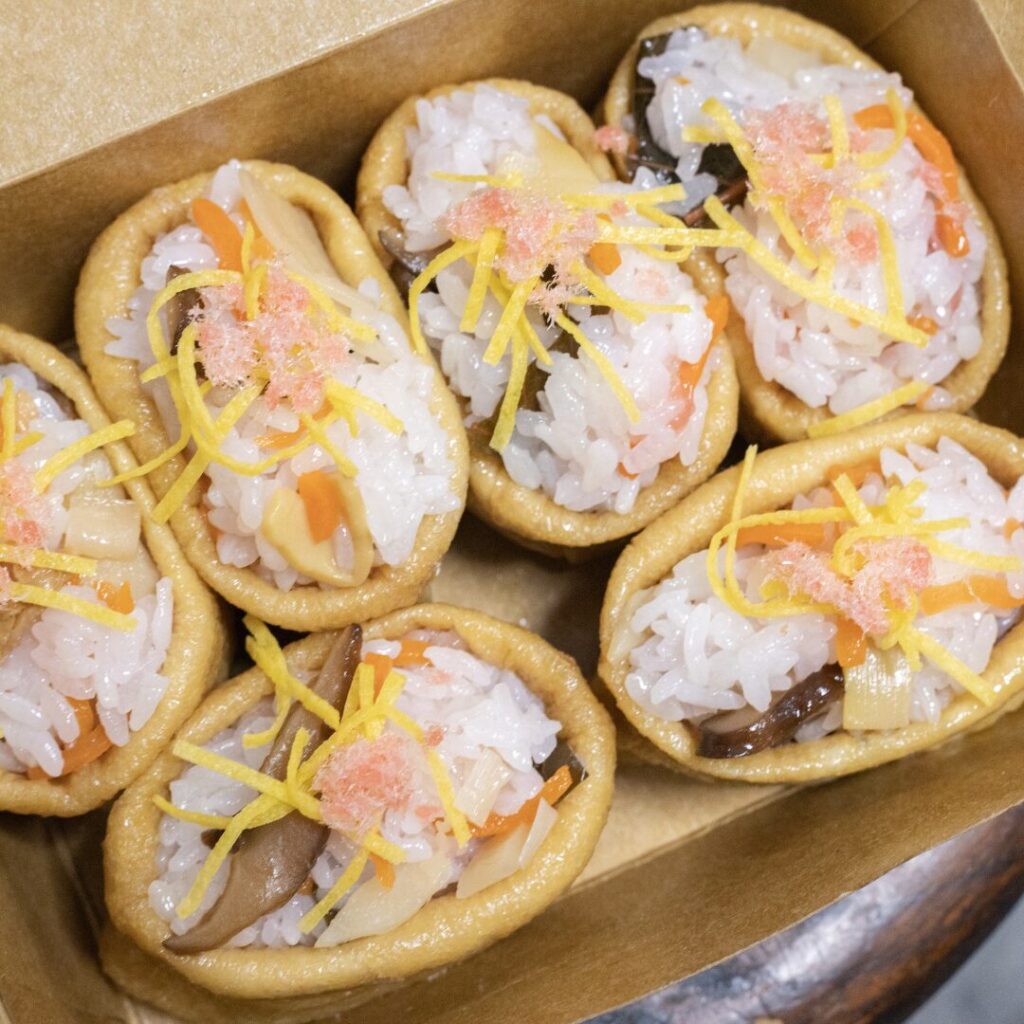Rolling sushi can be a fun and rewarding experience, but not everyone has a sushi mat on hand. Fortunately, you don’t need a mat to make sushi. Rolling sushi without a mat is easier than you might think, and it can be a fun way to experiment with different ingredients and flavors.
To roll sushi without a mat, you’ll need to have a few key ingredients on hand. This includes sushi rice, nori sheets, and fillings of your choice. You’ll also need to learn the proper technique for rolling sushi by hand. With a little practice, you’ll be able to create beautiful and delicious sushi rolls that are sure to impress your friends and family.
If you’re new to sushi-making, don’t worry. Rolling sushi without a mat is a simple process that anyone can master with a little practice. In this article, we’ll guide you through the process of making sushi without a mat, from preparing the rice and fillings to rolling and serving your sushi. Whether you’re a sushi lover or just looking to try something new, you’ll find everything you need to know to make delicious sushi rolls without a mat.
Key Takeaways
- Sushi can be made without a mat, and you only need a few key ingredients to make it.
- Proper technique is important when rolling sushi by hand.
- With practice, anyone can master the art of rolling sushi without a mat.
Understanding Sushi

Sushi is a traditional Japanese dish that has become popular all over the world. It typically consists of vinegared rice, raw or cooked fish, and vegetables, all rolled up in a sheet of nori seaweed. Sushi can be enjoyed in many different forms, from individual pieces of fish to elaborate rolls with multiple ingredients.
In Japan, sushi is often served in small restaurants where the chef prepares each dish in front of the customer. This style of dining is known as omakase, which means “I’ll leave it up to you.” The chef selects the ingredients and prepares each dish to order. This creates a unique and personalized dining experience.
Sushi can be made with a variety of ingredients, including fish, shellfish, vegetables, and even fruit. Fish rolls are the most popular type of sushi, but vegetable rolls are also a tasty and healthy option. Sushi rolls are a popular way to enjoy sushi, with ingredients wrapped up in a sheet of nori and sliced into bite-sized pieces.
For those who want to try something different, sushi burritos are a fun and unique twist on traditional sushi. These oversized rolls are made with a tortilla instead of nori. And they can be filled with a variety of ingredients, from raw fish to avocado and cucumber.
Whether you’re a sushi aficionado or a newcomer to the world of Japanese cuisine, there’s something for everyone to enjoy. With a little practice, you can even learn to make sushi without a mat at home.
Ingredients Needed

Rolling sushi without a mat is easy and requires minimal ingredients. Here are the essential ingredients you will need:
Nori
Nori is a type of dried seaweed used to wrap sushi. It is available at most grocery stores and Asian markets. Nori sheets are typically sold in packs of ten or more.
Sushi Rice
Sushi rice is a short-grain rice that is sticky and slightly sweet. It is best to use sushi rice especially if you’re making sushi without a mat, as it holds together well when rolled. You can find sushi rice at most grocery stores or Asian markets.
Filling
Sushi fillings can vary depending on your preference. Vegetables such as julienned cucumbers, avocado slices, and carrots are popular choices. Cooked fish, shrimp, crabmeat, ham, and omelet are also common fillings. Vegan options such as kimchi and tofu can also be used.
Sugar and Salt
Sushi rice is seasoned with a mixture of sugar, salt, and rice vinegar. The sugar adds sweetness, while the salt enhances the flavor. You will need two tablespoons of sugar and half a teaspoon of salt for every cup of rice.
Sharp Knife
Having a sharp knife is crucial when making sushi at home. If your knife is dull, it can make cutting the rolls neatly quite difficult. On the other hand, using a sharp knife will significantly simplify the process.
Pickled Ginger and Soy Sauce
Pickled ginger and soy sauce are traditional condiments served with sushi. They add flavor and help cleanse the palate between bites. If you’re looking for a gluten-free alternative to soy sauce, you can opt for Tamari. It’s typically made from soybeans and has a rich, slightly sweeter flavor compared to regular soy sauce.
Optional Ingredients
Sesame seeds, cooked rice, and soy glaze are optional ingredients that can be used to enhance the flavor of your sushi. Raw fish and meat can also be used as fillings, but they require proper preparation and handling.
With these ingredients, you’re all set to create a bunch of sushi without a mat! Think inside-out rolls, seaweed-wrapped ones, and more delicious possibilities.
Preparation of Sushi Rice

Sushi rice is a crucial component of sushi, and it needs to be prepared correctly to ensure a successful sushi roll. Here is an easy sushi rice recipe that you can use to make sushi without a mat.
Ingredients
- 1 cup of sushi rice
- 2 cups of water
- 3 tablespoons of rice vinegar
- 2 tablespoons of sugar
- 1/2 teaspoon of salt



Konnichiwa! (Hello!) I'm Pat Tokuyama, a Japanese tofu cookbook author, who travels for music, food, and adventure. If you like Japanese tea, checkout some of the newestorganic japanese tea, matcha bowls and noren and more!
** Curious about the Plant Based Japanese Cooking Club? ** Learn more here!
Instructions
- Rinse the rice in cold water until the water runs clear.
- In a pot, combine the rice and water and bring to a boil over high heat.
- Reduce the heat to low and cover the pot with a lid. Let the rice simmer for 18 minutes.
- Remove the pot from the heat and let it sit for 10 minutes.
- In a separate bowl, combine the rice vinegar, sugar, and salt. Stir until the sugar and salt dissolve completely.
- Transfer the cooked rice to a large bowl and add the vinegar mixture. Using a spatula, gently mix the rice, ensuring not to crush the individual grains.
- Cover the bowl with a damp towel and let it cool to room temperature.
You can use either white or brown rice for sushi, but it is essential to use sushi rice to ensure the right texture. This easy sushi rice recipe will give you perfectly seasoned rice that is ideal for rolling sushi without a mat.
Choosing and Preparing Fillings

When it comes to rolling sushi without a mat, the filling is just as important as the rice and nori. The filling is what gives sushi its unique flavor and texture. There are many different types of fillings you can use, including vegetables, fish, meat, and more.
Vegetables are a popular choice for sushi fillings. Cucumber is a classic sushi ingredient, and it adds a refreshing crunch to your rolls. Other veggies that work well include julienned carrots, avocado slices, and bell pepper.
Fish is another popular filling for sushi. Cooked fish like shrimp or salmon can be used, as well as raw fish like tuna or yellowtail. If you’re using raw fish, make sure it’s sushi-grade and fresh.
Meat can also be used as a sushi filling. Crabmeat and ham are popular choices. If you’re using meat, make sure it’s cooked and sliced thinly.
To prepare your fillings, make sure they are all cut into thin strips or slices. This will make them easier to roll into your sushi. You can also add some flavor to your fillings by marinating them in a mixture of soy sauce, rice vinegar, and sugar.
Overall, the key to choosing and preparing sushi fillings is to use fresh, high-quality ingredients and cut them into thin strips or slices. By having the correct ingredients and dedicating a bit of practice, you can easily craft a variety of tasty sushi without a mat.
Rolling Sushi Without a Mat

Rolling sushi without a mat may seem daunting, but it is actually quite simple. You can use a variety of household items, such as a kitchen towel, parchment paper, or even a silicone mat to roll sushi. Here are some easy steps to follow:
- Prepare the rice and filling as usual. Lay out a sheet of nori on a clean, flat surface, shiny side down.
- Wet your hands with water to prevent the rice from sticking. Take a handful of sushi rice and spread it evenly over the nori, leaving about 1 inch of space at the top.
- Add your desired filling, such as avocado, cucumber, or fish, in a line across the center of the rice.
- Using your fingertips, lift the edge of the nori closest to you and fold it over the filling. Use your fingers to press down on the filling to create a cylindrical shape.
- Roll the sushi tightly away from you, using your fingers to press down on the roll as you go. Use a clean kitchen towel to help apply pressure and keep the roll tight.
- Once the roll is complete, use a sharp knife to slice it into pieces. A wet nori will help prevent the knife from sticking.
Remember to keep the pressure consistent throughout the rolling process to ensure a tight roll. If you don’t have a rolling mat, a clean kitchen towel or parchment paper can be used as a substitute. Additionally, a silicone mat can be used as a non-stick alternative to a traditional bamboo mat.
By following these simple steps, you can easily roll sushi without a mat and impress your guests with your homemade sushi skills.
Serving Sushi

Once you have successfully rolled your sushi, it’s time to serve it. The presentation of sushi is just as important as the taste, so it’s important to serve it correctly.
Firstly, use a sharp knife to cut the sushi rolls into bite-size pieces. A dull knife can damage the sushi and make it difficult to cut it cleanly. It’s best to use a sharp, non-serrated knife and wet it before cutting to prevent the rice from sticking to the blade.
Next, arrange the sushi pieces on a plate and serve with soy sauce, wasabi, and pickled ginger. Soy sauce is a staple condiment for sushi, and wasabi adds a spicy kick to the dish. Be careful not to add too much wasabi, as it can overpower the other flavors.
When eating sushi, use gentle pressure to dip the sushi into the soy sauce. Avoid soaking the rice in the sauce, as it can make the sushi too salty. Pickled ginger is also a common accompaniment to sushi, as it helps cleanse the palate between bites.
If you’re dining at a sushi restaurant, the sushi chef will typically arrange the sushi beautifully on a platter and serve it to you directly. However, if you’re making sushi at home, take the time to arrange the sushi pieces neatly on a plate to impress your guests.
All in all, serving sushi without a mat is a breeze! Just remember, the little details matter to make sure the dish is presented and savored just right.
 Happy Sales, 6 Piece Japanese Style Sushi Plate Dinnerware Set (GreyBlue)
Happy Sales, 6 Piece Japanese Style Sushi Plate Dinnerware Set (GreyBlue) - Number of Pieces: 6
- Material: Porcelain
- Weight: 2.6 Pounds
- Dimensions: 9"L x 6"W x 2.5"Th
- Color: GreyBlue
- Special Feature: Microwave Safe
- Visually appealing design.
- Durable ceramic material.
- Ideal for serving groups.
- Versatile for various dishes.
- Elevates dining table aesthetics.
- Limited to sushi use.
- Hand wash required.
- Potential fragility.
- Set size may not suffice.
- Relatively higher price.











Konnichiwa! (Hello!) I'm Pat Tokuyama, a Japanese tofu cookbook author, who travels for music, food, and adventure. If you like Japanese tea, checkout some of the newestorganic japanese tea, matcha bowls and noren and more!
** Curious about the Plant Based Japanese Cooking Club? ** Learn more here!